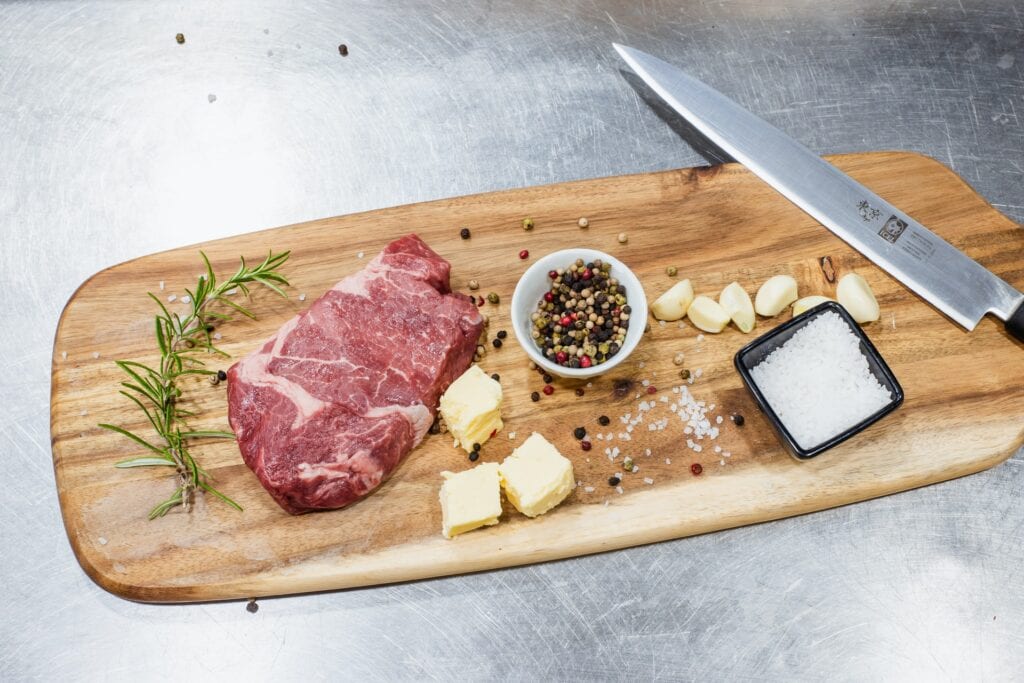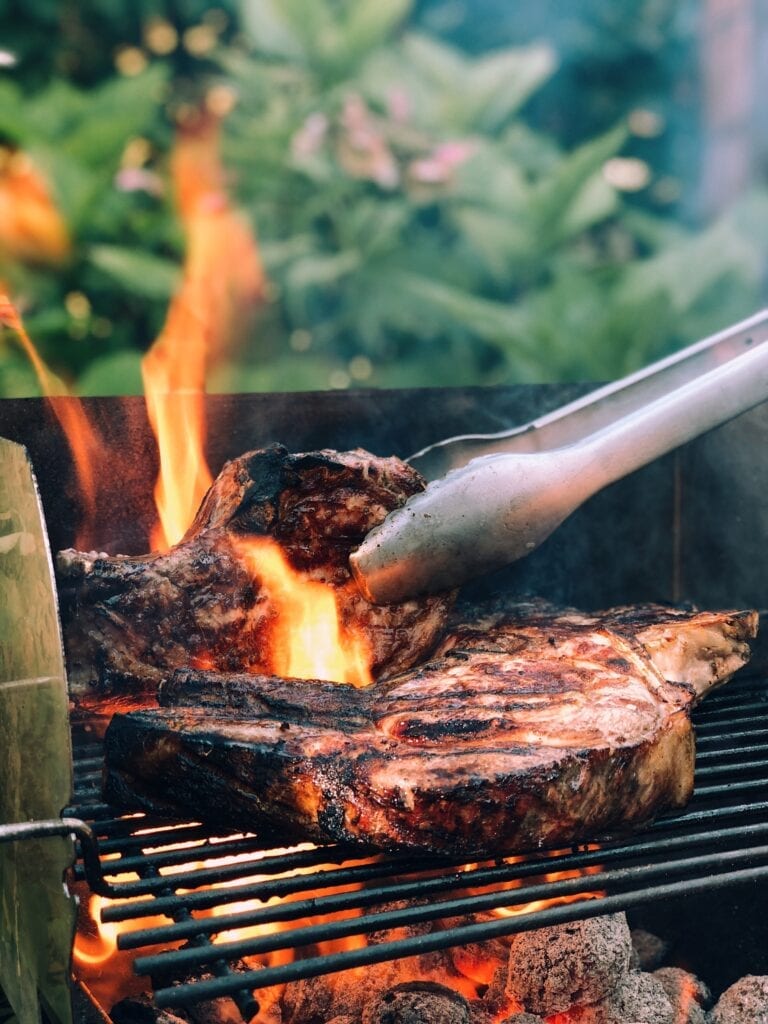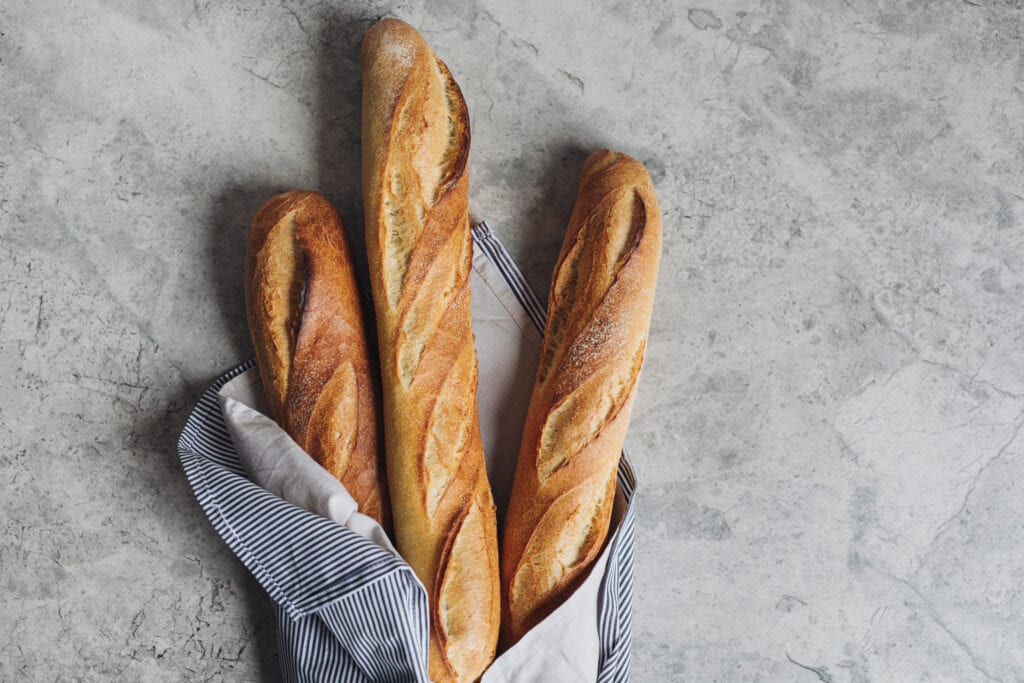Share Post
The Best Grades of Beef
Canada A/AA/AAA/Prime Grades
- Canadian Beef Grades: (A, AA, AAA, Prime) represent 98% of all youthful graded Canadian beef.
- The grade criteria for these four grades are identical, with the only exception being the degree of marbling.
- The Canada Prime grade is virtually identical to the U.S.D.A. Prime grade
- Canada A grade is unique to Canada in that there is less marbling but all other quality attributes are still present. This particular grade is well suited to those consumers limiting their fat intake.
USDA Steak Grades: Select, Choice, and Prime
- There are three grades of steak that you will find in a US supermarket: Select, Choice, and Prime.
- Select grade is just above what the USDA deems edible.
- It will always be worth it to pay the extra money per pound for the Choice grade.
- If your supermarket carries Prime grade, lucky you!
PRO TIP: Only buy Choice or Prime Grade steaks.
Thickness Of The Steak
While 1 inch is a good starting point, the best steaks, especially when it comes to premium cuts like ribeyes and strips, are around 1.5 inches in thickness.
A 1.5-inch thick steak – the size you’ll find from most premium butchers or wholesalers – is where steak excellence starts to happen. This thickness ensures that your steak will achieve the perfect char on the outside just as the interior reaches the ideal temperature
Choose The Right Cut

Photo by Charlie Solorzano on Unsplash
- Steaks with some marbling are the best for the BBQ. It adds flavor and juiciness as it melts into the steak when cooking.
- Fat is flavor, so look for beef that looks plump, bright red and has the most marbling
- Grain-fed or grain-finished beef will have more marbling than grass-fed beef.”
Prepare The Steak: Salt, Pepper, Olive Oil & Fresh Garlic is all you need

Photo by Louis Hansel on Unsplash
Some folks prefer a steak rub, but I season with only salt & pepper so I can taste the flavour of the steak. Use a teaspoon of good sea salt and fresh ground peppercorns and I sometimes add fresh rosemary. You can also have steak sauce handy for after, but let the salt (and maybe some pepper) do its thing during the actual cooking process.
- Pepper not only adds an element of spice to the steak, but it also adds crunch. To achieve this, pour whole peppercorns in a resealable plastic bag and crush them with a heavy skillet.
- Make Sure the Meat is Dry. After salting the meat and letting it sit, pat it dry with paper towels to remove any excess moisture.
- Some salt on a steak is a good thing, but a ton of salt on a steak will send you to the nearest watering fountain in an attempt to quench your thirst
- The salt helps the cells retain water, guaranteeing juicy meat. Before placing it on the grill, pat dry with paper towels (Use kosher salt; the bigger grains make for a superior crust.
- Crush 2/3 cloves of garlic and add to 1/4 cup of extra virgin olive oil. I always have a garlic oil mixture ready to baste, fry and dip with. Let this sit so the garlic saturates the flavor of the olive oil. This is the last step. Just before putting steaks on the grill, baste both sides with the garlic oil.
Grilling: Do It Like The Professionals

Photo by Paul Hermann on Unsplash
- Take the steak out of the fridge at least 30 min before grilling
- Turn the grill on high and heat up to 400/500 degrees if you have a gas grill
- You want a hot side to sear the meat and a not-so-hot side to finish the cooking. Keep one burner on low while the others go full blast.
- To get that rib-eye out of harm’s way, gently slide it to a flare-free area with tongs until the fire subsides. (If you throw the meat around, you’ll shake out more fat and start another fire.)
- Place steaks on the preheated grill with the ends at 10 and 4 o’clock. When the meat has seared and juices begin to rise to the top, turn steaks clockwise, with the ends at 2 and 8 o’clock. After a minute or two, flip steaks over and cook until they reach the desired degree of doneness.
Don’t Guess—Use A Thermometer
A temperature of 125 degrees means medium-rare. Instant-read thermometers guarantee you’ll get it right.
- Insert thermometer through the side of the cut, tip in the center, not touching bone or fat.
- Remove steaks from heat when the thermometer registers 5°F lower than the desired doneness.
- Rest your steaks. The temperature will continue to rise.
Check the Temperature
Preheat your grill to medium-high or high to make it hot! The heat helps you avoid sticking and achieve the perfect sear. Here’s a quick guide to temperature based on your preferred level of doneness:
- Rare: 125 degrees Fahrenheit
- Medium rare: 135 degrees Fahrenheit
- Medium well: 150 degrees Fahrenheit
- Well-done: 160 degrees Fahrenheit
Finishing The Steak
Let it Rest
After cooking, let the meat rest before cutting and serving. Ideally, you want to let the steak rest for about five minutes for each inch of thickness. Most steaks you will get from the market are around 1.5 inches thick, so you’ll be looking at a seven- to eight-minute rest time.
- Take the steak off the grill and let rest for 10 min (steak will continue to cook).
- This does wonders for the steak—no foil tent needed. This lets all of the juices settle so the beef stays moist.
- If steak cools off too much, put back on a hot grill for a minute each on both sides to reheat.
- Serve with herbed butter slices and or sauteed mushroom caps.
And now, with all of this steak knowledge, it’s time to check it out by cooking up this bone-in ribeye recipe.

Share Post
Ingredients:
- 2 bone-in ribeye steaks, 12-14 oz each
- Herbed butter (see recipe)
- 1 tsp parsley, chopped
- Salt and pepper
Herbed Butter:
½ cup soft butter
2 cloves pressed garlic
½ tsp thyme
½ tsp rosemary
½ tsp parsley
Dash black pepper
1-1/2 tsp lemon juice
Put all ingredients in a bowl and mix until well blended. Put butter on parchment paper and roll it into a log. Store in the fridge until firmed up. Once firmed up it can be cut into slices
Method:
- Remove the steaks from the refrigerator and let them rest at room temperature for 30 to 60 minutes. (Tip: since you want an evenly-cooked steak, the closer you can get your steak to its final cooking temperature, the better.)
- Prepare a charcoal or gas grill (or preheat the broiler and position a rack 4 inches from the element). Lightly spray the grill rack with vegetable oil cooking spray. The coals should be medium-hot for the charcoal grill. The burners should be on high for the gas grill.
- If you are using a steak rub, season them now by dredging them on both sides. Shake off the excess.
- If using a charcoal grill, cook on one side for 10 minutes. Turn using tongs and grill the other side for 10-12 minutes for medium-rare, or until the desired degree of doneness. If using a gas grill, grill for 7-8 minutes. Turn using tongs and grill the other side for 6-7 minutes for medium-rare, or until the desired degree of doneness. If using the broiler, broil 4 inches from the heat source for 8 minutes. Turn using tongs, and broil the other side for 6-7 minutes for medium-rare or until the desired degree of doneness.
- Remove the steaks from the heat and let sit for 8-10 minutes.
- To serve, slice the steaks into 3/4-inch-thick slices, place on a hot plate, add a herbed butter slice and fresh chopped parsley if desired.
- Eat that perfectly-cooked masterpiece and pat yourself on the back.
Bon Appetit!
About Me

“Eat.Live.Design is where you connect with ideas for living a better life"
Hi, I’m Bev, I love sharing my home renovation projects, delicious recipes and lifestyle tips. I have dedicated hundreds of hours to researching all of my passions. My ultimate goal is to share this valuable information with all of you to take the guesswork out of your projects and help make your lives easier.
Promo Box




